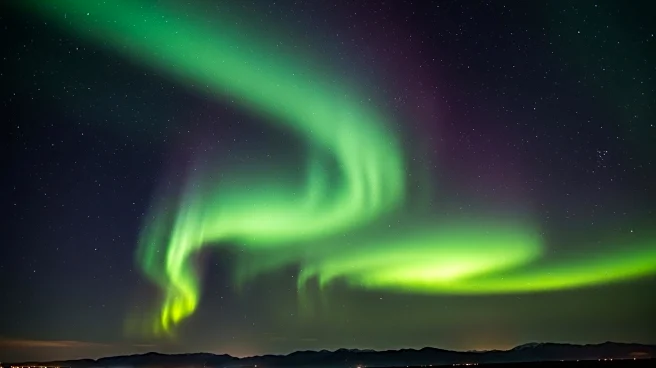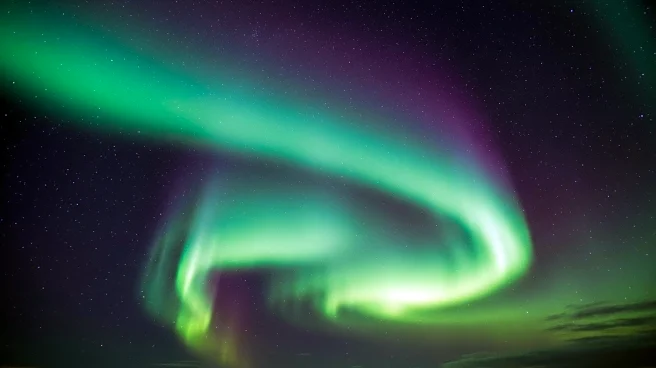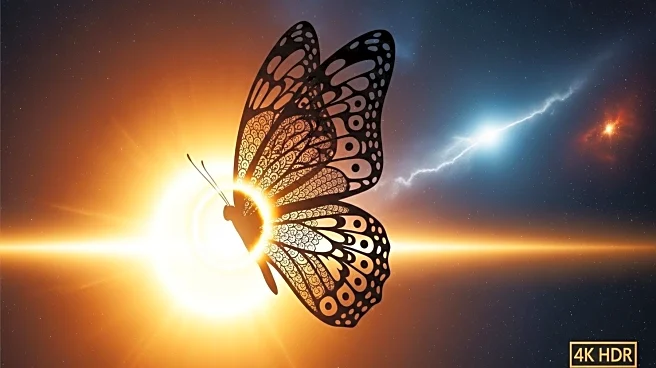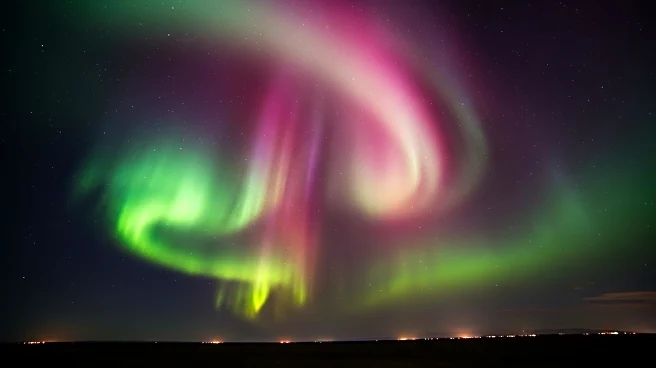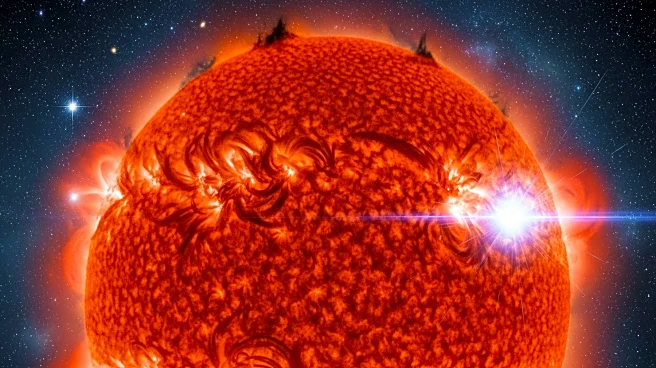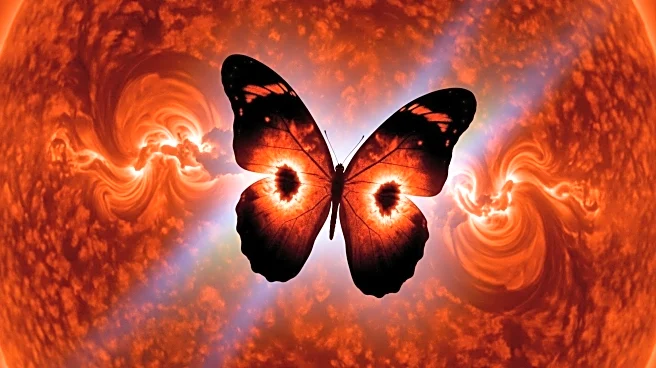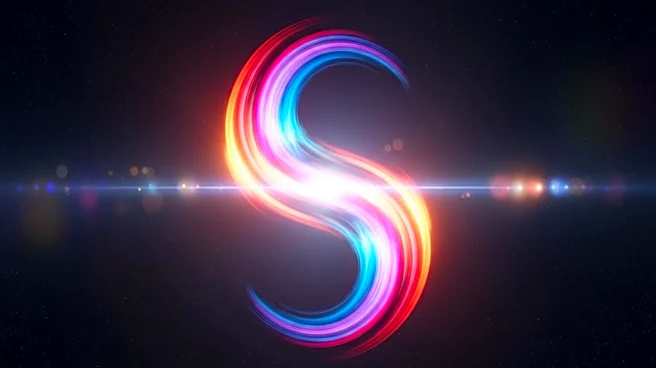What's Happening?
A butterfly-shaped coronal hole on the sun is sending high-speed solar wind towards Earth, expected to arrive by September 14. This could lead to geomagnetic storms ranging from G1 (minor) to G2 (moderate), potentially causing auroras visible at mid- to high-latitudes in the Northern Hemisphere, including Canada, Alaska, and Scandinavia. The Russell-McPherron effect, which occurs during equinoxes, may enhance the geomagnetic activity, increasing the likelihood of auroras.
Why It's Important?
Geomagnetic storms can impact Earth's magnetosphere, affecting satellite operations, power grids, and communication systems. The potential for auroras provides an opportunity for scientific observation and public engagement with natural phenomena. Understanding and predicting space weather events are crucial for mitigating their effects on technology and infrastructure. The equinox boost increases the likelihood of geomagnetic disturbances, highlighting the need for continued monitoring and research in space weather forecasting.
What's Next?
Observers in affected regions should monitor updates from space weather agencies for potential aurora sightings. The ongoing study of solar wind interactions with Earth's magnetic field will continue to improve predictive models and preparedness for geomagnetic storms. As the autumnal equinox approaches, the conditions for observing auroras may become more favorable, offering further opportunities for scientific study and public enjoyment.
